Where to hate daylight saving time and where to love it
Update: a newer version of this little project helps you make your complaints about daylight saving time—whether they’re for or against it—with clearer messages about whether keeping DST, abolishing it, or making it permanent would be best for your daylight preferences. Give it a whirl over at Observable.
tl;dr version: just scroll down and play with the map.
If you’re on Facebook or Twitter or really are any person in America with friends who say things, you hear it twice a year, in March and November: “LIFE IS THE WORST WHY DO WE HAVE TO CHANGE THE CLOCKS WE SHOULD GET RID OF DAYLIGHT SAVINGS [sic] TIME!!!!!”. Maybe you’re even one of the people saying it.
Usually the whining is short-term shock at the sudden change in the timing of day and night, not a reasoned assessment of what it means for the timing of daylight over the whole year. People often don’t even know what they’re complaining about: they’ll rail against “daylight saving time” even if it’s the early sunsets of standard time that they hate. For the record I’m no DST hater, because my morning commute is about 5 seconds (no pants required) so I never need to wake up before the sun, and I live in a place where the sun sets at 4:11 in the damn afternoon in winter so I’d love to push that back an hour.
There is a cool interactive piece about this by Keith Collins on Quartz charting how keeping or abolishing DST would affect your daylight hours. In New York, you’d have to wake up at 4:30 AM or go to bed absurdly early in order for DST not to increase daylight in your waking hours.
If you wake up at 6:30 like a normal human (note: “normal” still sucks), DST makes you wake up in darkness for a handful of extra days in spring and fall. The daylight is regained in the evening, of course, but I’ll grant that waking up before the sun is miserable.
It’s noted on that page that the chart’s data “assume you are located in New York, but differences are minimal across the contiguous 48 states,” but I’m a geographer and must always disagree with any and all spatial claims, by anyone. I live in the same time zone where I grew up, but the sunrise/set times are almost an hour different between the two places.
Total daylight is a function of latitude and time of year, as seen in this plot from Wikipedia:
Latitude thus affects how early or late the sun rises and sets, but what the clock says depends on a location’s longitude within its time zone. The farther east it is, the earlier the sun will rise and set. Considering all this, I want to map sunrise and sunset times in the United States and see how they are affected by daylight saving time. I’ve done so by using a little bit of GIS and the super handy SunCalc JavaScript library by Vladimir Agafonkin.
Let’s map how many days of the year have reasonable sunrise and sunset times with and without daylight saving time. I define “reasonable” times as 7 AM and 6 PM. That’s kind of arbitrary, but assuming roughly half an hour of twilight, it at least puts some light in the sky around the time the average American wakes up (6:30ish based on some cursory poking around) and at the end of the business day. But you can define them differently. Explore the coarsely gridded map below and see the geography of sunrise and sunset with and without daylight saving time.
To summarize, these are the scenarios using my preferred times. First, the state of things as they now exist:
And here’s what everyone apparently wants, death to daylight saving time:
It looks like an improvement, right? The sunset map doesn’t change a whole lot, while vast areas seem to get a lot more days with morning sun. So yes, maybe you could cut your coffee budget if you live on the western side of your time zone. Just remember you’d be giving up those wonderful summer evenings.
Now let’s go bonkers and implement daylight saving time all year long. Or, for the same effect, we could get rid of it but have everyone shift their time zone one to the east:
Admittedly the sunrise map looks bleak. But look how much brighter that sunset map gets. I mean, just look at it!
If you want consistent morning daylight, you should be as far southeast in your time zone as possible. I recommend the Big Island of Hawaii. If, like me, you’re all about evening sun, hop the border to the southwest part of the next time zone. But remember that’s for consistency, not total daylight. The farther north you go, the longer days will be in the summer—but the shorter they’ll be in winter.
Anyway, here’s all that in poster form for some reason.

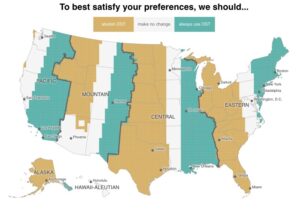

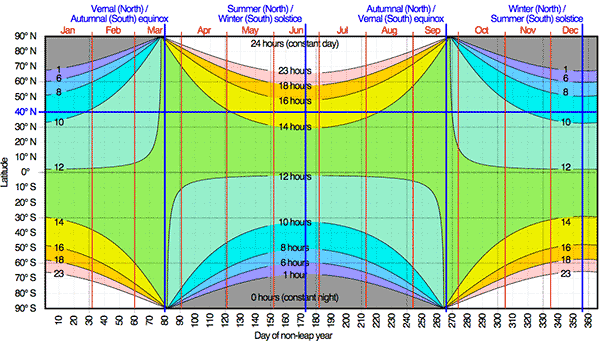


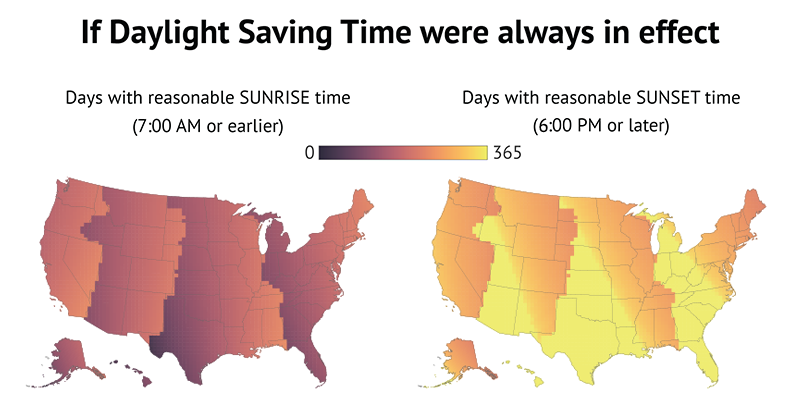
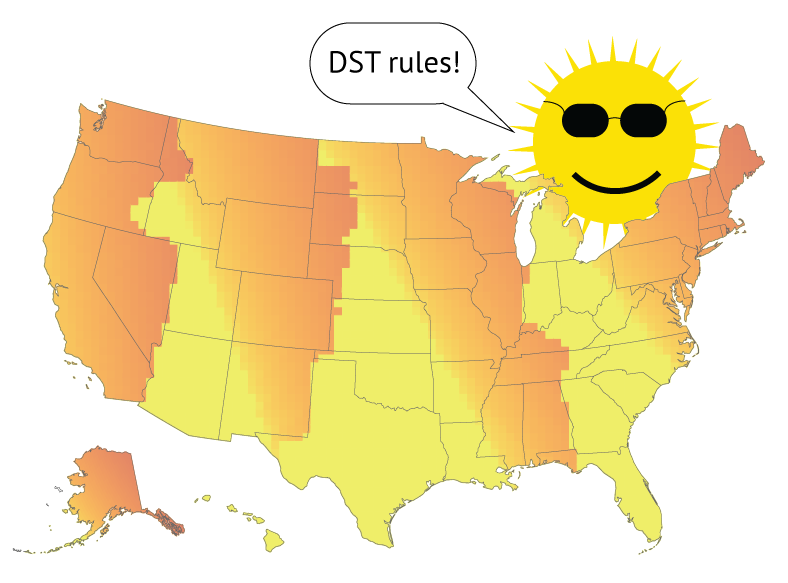
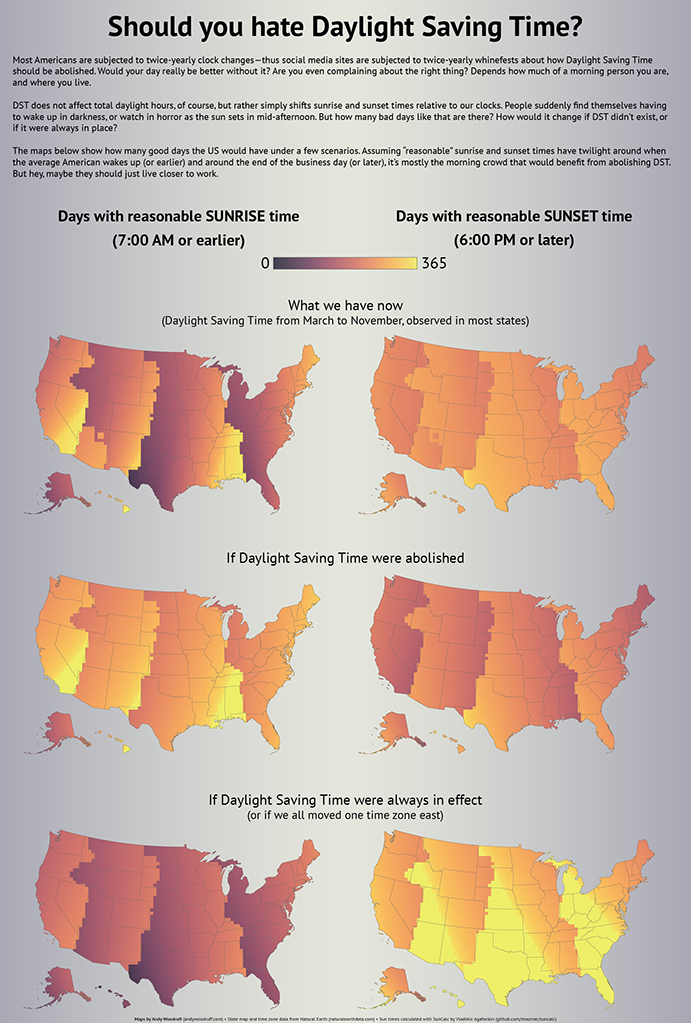
83 Comments